In pictures: Hiroshima, the first atomic bomb
- Published
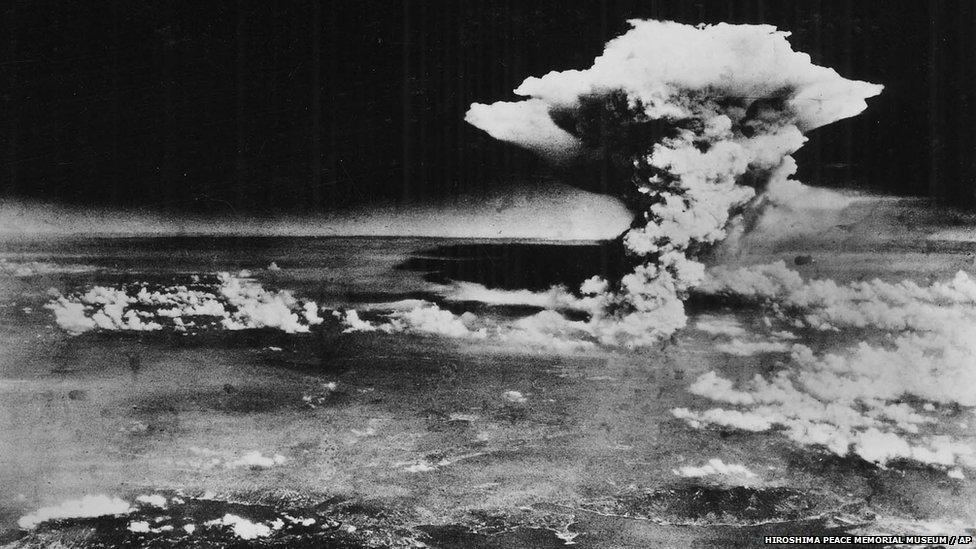
The first atomic bomb was dropped by a United States aircraft on the Japanese city of Hiroshima on 6 August 1945.
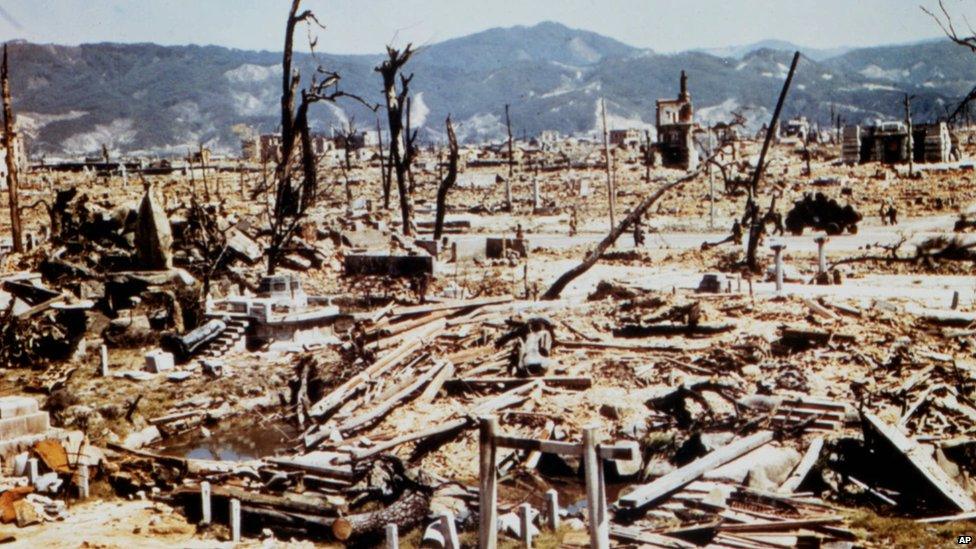
US President Harry S Truman, who announced the news from the cruiser USS Augusta in the mid-Atlantic, said the device was more than 2,000 times more powerful than the largest conventional bomb previously used.

The Hiroshima bomb, known as "Little Boy", contained the equivalent of between 12 and 15,000 tons of TNT and devastated an area of 13 square kilometres (five square miles).

The bomb was dropped at 0815 local time from an American B-29 Superfortress, known as Enola Gay, seen here returning to the Marianas Island.
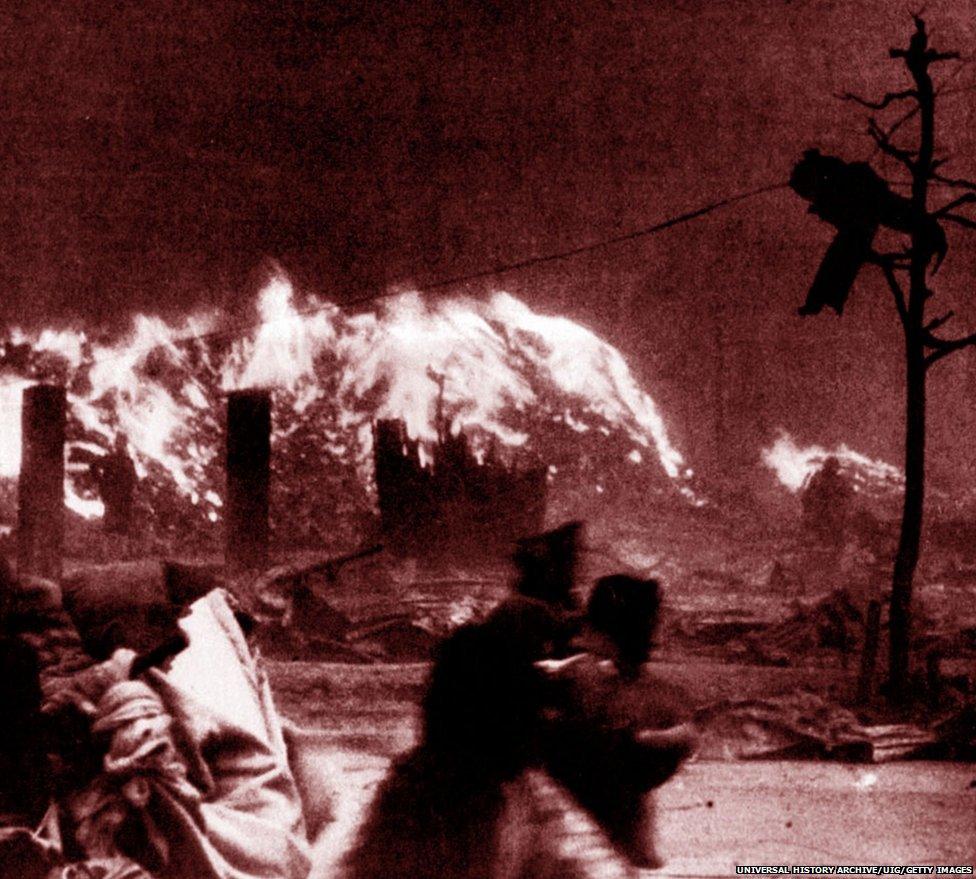
The plane's crew say they saw a column of smoke rising and intense fires springing up.
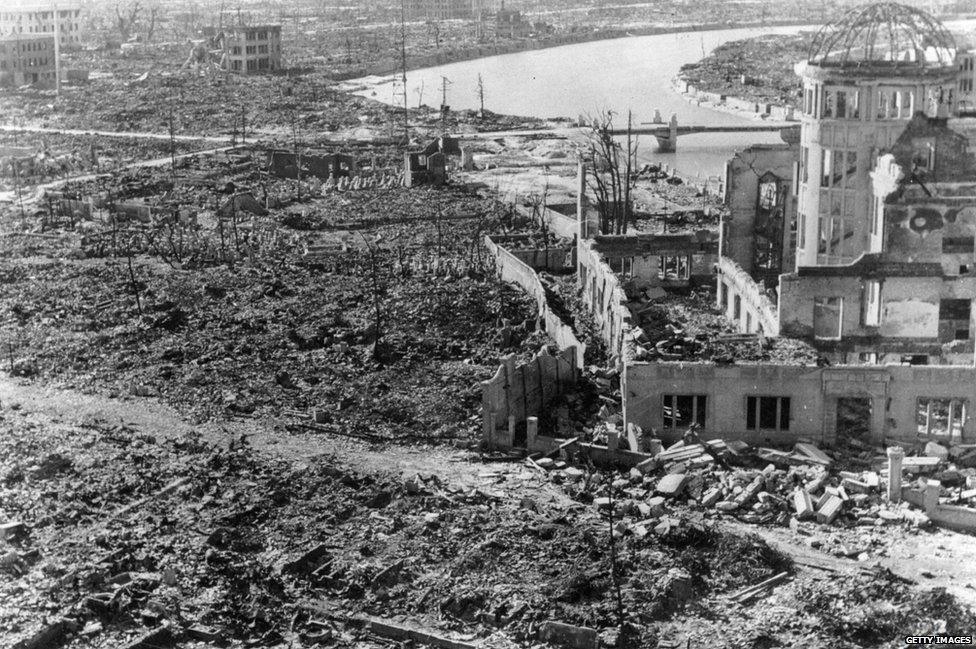
More than 60% of the buildings in the city were destroyed.
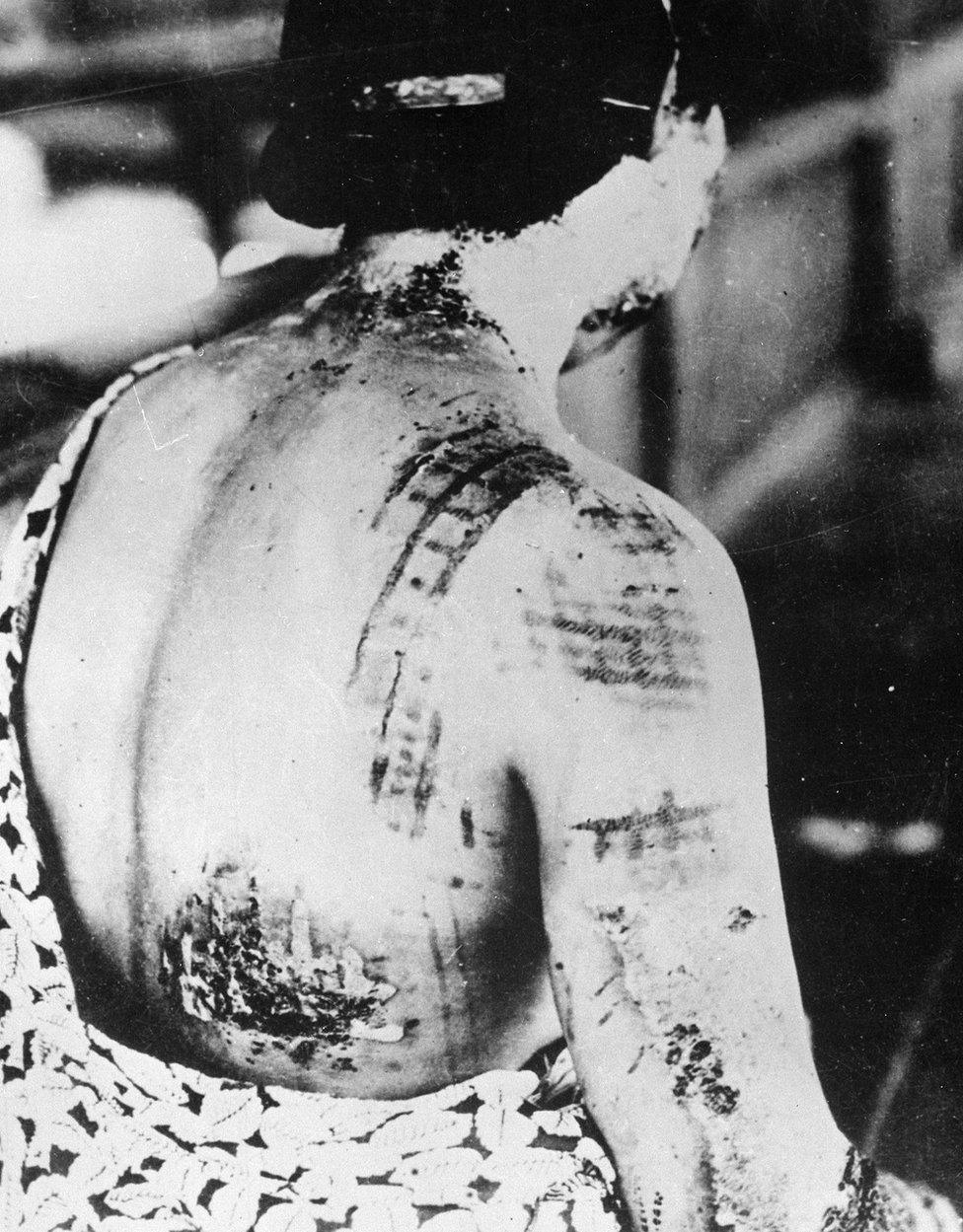
No-one is sure how many died on that first day. Estimates start at 70,000 but later estimates suggest the final toll was far higher, about 140,000, of Hiroshima's 350,000 population. This person's skin was burned in a pattern corresponding to the dark portions of a kimono worn at the time of the explosion.

The US President said the atomic bomb heralded the "harnessing of the basic power of the universe". It also marked a victory over the Germans in the race to be first to develop a weapon using atomic energy.

Another atomic bomb dropped three days later over the Japanese city of Nagasaki killed at least 74,000 people by the end of year.
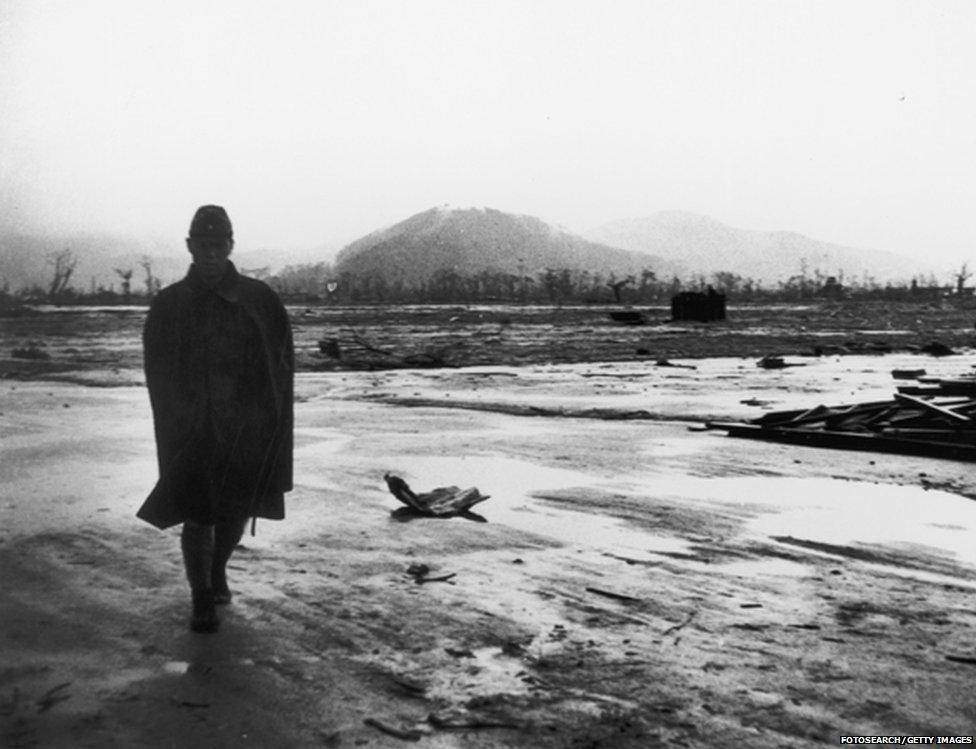
The bombings brought about an abrupt end to the war in Asia - but critics said Japan had already been on the brink of surrender. The two atomic bombs, with the Soviet declaration of war against Japan on 8 August 1945, finally left the Japanese no choice. Japan surrendered to the Allies on 14 August 1945.